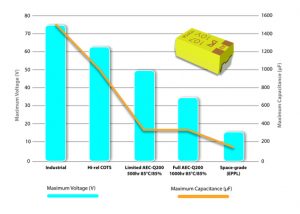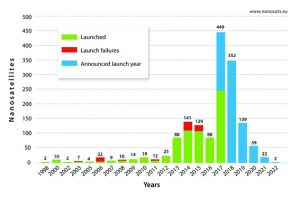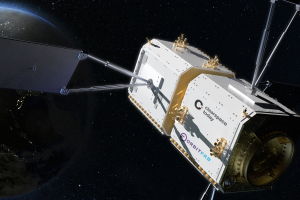Space is no longer the exclusive domain of a handful of governments with well‑funded space programmes and multi-million dollar satellites. Commercial companies now have the capability to build and generate revenue from small satellites in low earth orbit.
There is a vast number of applications for the data gathered by low-level constellations of small nano satellites (nanosats) and cube satellites. In addition to their use in communication networks, they offer high-resolution imagery and mapping capabilities which have commercial applications for monitoring land-use, natural resources, environmental impacts, forestry management, agriculture, urban planning and asset tracking. BIS Research estimates that the global market for nanosats could reach $6.35bn by 2021.
According to the nanosats.eu website 45.5% of all nanosats have been built by businesses; 37.3% by universities; and only 10.9% by space agencies or the military.
High reliability vs high affordability
The shorter life-cycles and non-critical status of LEO satellites, combined with the need to provide a commercial return, are having a major impact on design by shifting the focus from ultra‑high reliability to affordable reliability.
In response to these new price pressures engineers have to find alternative ways to mitigate the high cost of using fully space-qualified components.
One way to do this is to replace European Space Components Coordination (ESCC) Qualified Parts List/European Preferred Parts List passive components with lower-grade options, such as high-reliability commercial off-the-shelf (COTS) substitutes; or consider automotive‑grade parts that meet the AEC-Q200 standard.
The typical approach is to use lower-cost industrial-grade passives at the bread board, prototype and design validation stages of the design and move to higher-grade components for the flight model.
An example of this is the polymer electrolytic capacitor. These can offer designers a reduction in component count and board space required by providing higher total capacitance than ceramic capacitors.
However, the number of variants of any capacitor or resistor is typically reduced as reliability increases. Even experienced designers can find that the particular value, voltage or case‑size of a passive designed in at the bread board stage is not available at the higher reliability level for the flight model.
This can be seen with Kemet polymer electrolytic capacitors, where there are 250 industrial-grade variants at voltages above 6.3V; 165 high-reliability COTS variants; 30 automotive-grade parts and 24 with full AEC-Q200 qualification testing. On the European Preferred Product List the range is reduced to just 11 devices. The decrease in the maximum capacitance value and voltage available at each reliability level is shown in Figure 1.
Figure 1: Maximum capacitance and voltage decrease as reliability increases
A potential solution to the limited range of space-grade passives is to use additional failure-rate analysis and testing to enhance the reliability of COTS parts. Although there is an additional cost and lead-time for these processes this can be a viable alternative when the value or voltage required is beyond the range of the space-grade version and the programme can allow for the use of alternatives.
These approaches can be used to design more cost-conscious satellites, but there are other design objectives. To minimise launch costs, designers must meet tight weight limits, which means aiming to reduce component count, without compromising the reliability or the performance of the circuit.
Using higher-specification components such as polymer capacitors can provide an increase in in-orbit performance. The lower equivalent series resistance allows for greater efficiency, conserving the satellite’s energy consumption through reduced losses or potentially increasing the useful power output to increase communications or processing performance.
The use of multi-chip array (MCA) high-reliability semiconductors, such as those from TT Electronics, can help to reduce component count and weight, and can help to increase reliability by reducing the number of interconnects on the PCB and inside the package.
Their ceramic packages integrate configurable islands, which allow multiple die to be bonded down and wire-bonded to other islands within the package, or to bond-pads for external connection. It is then possible to create building-block circuits within the MCA package which can be individually screened in accordance with space-agency test flows.
Demand vs capacity
The number of small satellite launches has culminated in a peak in 2017 (Figure 2). These increases have put additional pressure on the production capacity of the component manufacturers, which are already seeing a marked increase in demand from the automotive and defence sectors.
Figure 2: The number of nanosats by announced launch year
With a growing number of companies becoming reliant on the data from small satellite constellations, the space industry is beginning to find greater commercial impetus. This, in turn, may apply more pressure on the component manufacturers to adjust the balance given to high-volume over high-reliability components.
Until then, the OEMs that manufacture small satellites will need to work closely with their suppliers to monitor fluctuations in lead-time and to find alternatives if availability fails to keep up with the increased demand.
 Roger Tall is high-rel passives, semis and opto specialist at Charcroft Electronics
Roger Tall is high-rel passives, semis and opto specialist at Charcroft Electronics
 Electronics Weekly Electronics Design & Components Tech News
Electronics Weekly Electronics Design & Components Tech News





